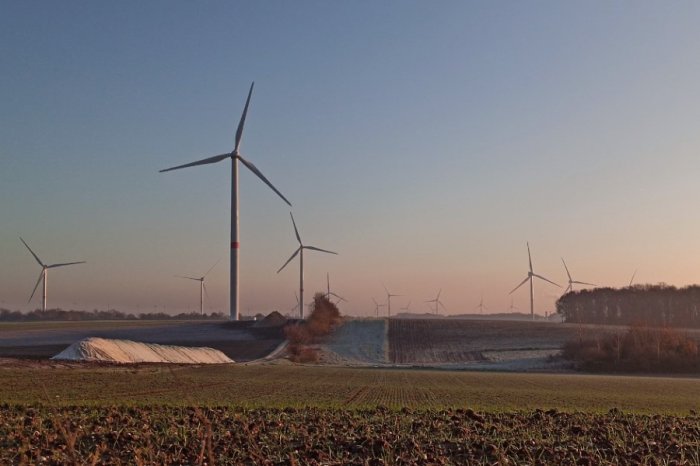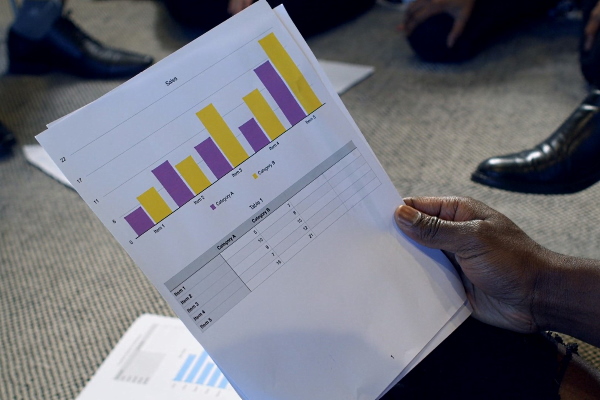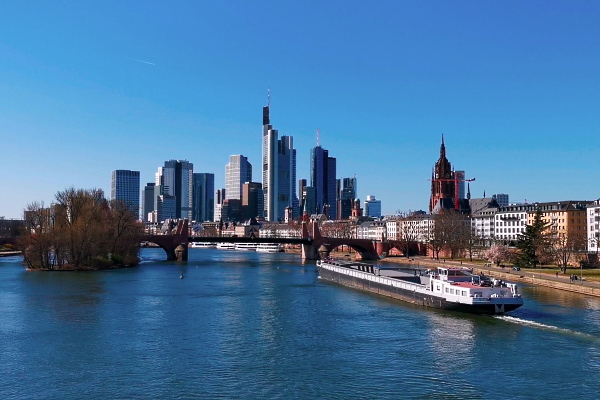To consider an application for financing, fill out the form and send it to us by e-mail along with the project brief, or contact our experts
An efficient and well-developed loan agreement market helps enterprises create value for shareholders.
Long-term business loans allow companies to lower the cost of capital, making an impressive impact on the main factors influencing business value.
European banks support large-scale financing investment projects and operating activities, both in the EU and the rest of the world, expanding the geography of European business. We have been providing financial services for medium and large businesses in Europe for many years.
LBFL Investment Croup is ready to offer your capital-intensive projects large long-term business loans for the energy sector, oil and gas sector, heavy industry, environmental protection, infrastructure, real estate and tourism.
Contact our representatives to find out more.
What is long-term business loan: definition, features and international practice
The principles of banking and business lending are formed by the national legislation of the EU member states and pan-European financial requirements and standards.Among the numerous types of banking activities, European legislation distinguishes the following:
• Issuance of business loans.
• Provision and confirmation of bank guarantees.
• Opening and confirmation of letters of credit.
• Check and transfer operations and operations with warrants.
• Bank guarantees, etc.
The above activities can be carried out by banks, branches of local or foreign banks, international financial institutions or other entities authorized to do so on the basis of current legislation.
As for the financing of big business, today banks remain the main source of debt capital here, but the role of innovative financial instruments has been growing rapidly in recent years, changing the landscape of the European market.
Business loans are considered to be long-term if they have a maturity of more than 3 years. Below we will take a look at long-term business loans, which are used by European companies to finance large investment projects stretching over a long time period from 3 years to two decades or more.
Business loan classification criteria
The classification of banking available for business in the European financial market can be based on many different criteria.The most important ones include the following:
• The purpose of the business loan.
• The method of issuing borrowed funds for the client.
• Method of repayment of borrowed funds.
• Loan maturity and others.
Bank loans can be used to finance the current activities of the company or to finance its investment projects (in the latter case, long-term loans play a primary role).
Taking into account this criterion, experts distinguish two main groups of business loans:
• Working capital loans, which are used to finance the day-to-day operations of a company. These are mostly loans of a long term nature that require debt repayment terms.
• Investment loans, which in most cases are long-term. Such loans are widely used to finance capital-intensive investment projects (for example, the construction of power plants).
The term of the loan is an important criterion for the classification of bank loans in EU.
According to this criterion, experts most often distinguish the following three types of business loans:
• Short-term loans that are issued for up to 1 year.
• Medium-term loans with maturities from 1 to 3 years.
• Long-term loans with a maturity of more than 3 years.
The maturity of a business loan most often depends on the purpose of the loan and the borrower's solvency.
A longer period means a higher risk for the bank, therefore business loans with a longer maturity usually have a higher cost.
In European financial practice, short-term loans are most often used to finance the current activities of a company, while medium and long-term loans are intended to finance investments.
Long-term investment loan
An investment loan is usually a long-term loan that is provided to companies and entrepreneurs for the purpose of financing the investment costs associated with running and developing a business.This loan is used to finance investment projects related to construction, reconstruction, modernization or expansion of the company's fixed assets.
The borrowed funds received from the bank are used to purchase real estate, build new or expand existing production lines, and purchase equipment. The loan amount is provided to the borrower in accordance with his individual needs.
An important condition for obtaining a long-term investment loan is documentary evidence of the high efficiency of the investment project, the provision of bank guarantees and well-prepared financial plans. To reduce credit risk, banks often require the borrower's own participation in an investment project, which can vary from 5% to half the cost or even more.
Link Bridge Financial LTDA LBFL offers long-term loans for business in Europe on favorable terms.
We are ready to consider your investment project in order to provide financial resources for up to 20 years.
We support financing for capital-intensive industries such as mechanical engineering, chemicals, energy, mining and processing, oil and gas, infrastructure, real estate and tourism.
Contact LBFL representatives and schedule a free consultation at any convenient time.
Long-term business loan agreement
A business loan refers to an agreement made in writing between a bank and a corporate borrower.By means of a loan agreement, the bank must provide the borrower for the period specified in the agreement, the amount of funds intended for a specific purpose. In turn, the borrower must use it on the terms specified in the agreement, and return the entire loan amount together with interest within the specified time frame and payment of a commission on the loan provided.
Borrower representatives should be especially careful about the structure and form of the loan agreement when it comes to a long-term business loan. In this case, the borrower company links its commercial activities to the bank for a long time, and any imperfect clauses of the agreement may in the future have a devastating effect on the financed project and the entire business.

Long-term business loan terms that must be included in the loan agreement include:
• Date and place of signing the agreement.
• The exact amount and currency of the loan.
• The share of the loan in the total costs incurred on it.
• The purpose of providing borrowed funds to the borrower.
• Powers of the bank related to control over the use of funds and loan repayment.
• Timing and method of transferring credit funds to the borrower.
• Terms of modification or termination of the agreement.
• Clear rules and terms for loan and interest repayment.
• Interest and bank commissions.
• Method of securing a loan.
• Grace period.
The terms of the business loan agreement must be stated clearly and transparently in order to prevent their ambiguous interpretation.
Different interpretations of the wording contained in the loan agreement can often lead to an increase in the cost of the loan and, ultimately, may even lead to termination of the agreement. In particular, this applies to the clauses of the loan agreement concerning the interest rate and the grace period.
If you need professional financial and legal advice for lending to large businesses, contact Link Bridge Financial LTDA LBFL.
We are ready to develop an optimal financial model for your investment project and provide comprehensive support at any stage of its implementation.
Business loans statistics and trends in Europe
The European banking sector, amid the pandemic and the slowdown in the economy, remains a solid support for local businesses, contributing up to 80% of all financial resources provided to companies in Europe in recent years.According to the European Banking Federation, the volume of lending to non-financial companies now exceeds 10 trillion euros, which demonstrates the stability of the sector even in difficult circumstances.
Major banks such as Intesa Sanpaolo, Deutsche Bank, Société Générale, Banco Santander, Crédit Agricole and BNP Paribas closely coordinate their activities with the European Investment Bank and other international structures. This allows local financial institutions to support the economy and successfully meet the complex financing challenges of businesses that have recently suffered from severe restrictions and growing geopolitical tensions on the eastern borders of the EU.
Loan-based business financing is particularly important in countries where bond markets are relatively poorly developed.
This group includes Poland, Hungary, Czech Republic and many others, where the corporate financing system is mainly based on banks.
Despite the rapid development of financial technologies and the emergence of a number of new instruments for business financing, long-term business loans remain of great importance for the economic development. The Netherlands, Portugal and Spain are now considered most developed corporate lending markets in the European Union, although there is a clear decline in key indicators across the continent, reflecting the slowdown in economic growth in Europe in recent years.
Regardless of the level of economic development of countries, the share of business loans in the total balance of banks varies widely.
This is determined by the local financial legislation, business climate and other factors.
For example, in 2013 this figure was 5.5% in the UK, 12% in Germany, 17.4% in Austria, exceeding 20% in the Baltic countries and reaching a record 38% in Bulgaria.
In recent years, the financial needs of businesses have increased significantly, due in part to the impact of the pandemic and ongoing restrictions on many sectors. Business loans in the European Union are currently bridging the huge gap between business losses and government financial support, which in many countries is considered unsatisfactory.
The growing role of Fintech and innovation in business finance
The European financial sector is transforming, and the flourishing of Fintech solutions today is an undeniable indicator of this evolution.The volume of digital payments in 2019-2020 grew by more than 20%, and the total investments of Fintech companies in the first half of 2020 exceeded 22 billion euros. Digital giants such as Alibaba, Baidu, Microsoft and Apple are actively involved in these processes.
According to the latest polls of the heads of American and European financial institutions, almost 90% of managers believe that some of the profits of banks in the coming years will be taken away by growing Fintech companies. It is clear that banks are taking decisive steps to improve their services, including improving mechanisms for providing long-term and working capital loans to businesses.
While the majority of Fintech loans falls on consumer lending, the Italy, Netherlands, Great Britain and a number of other European countries are increasingly using new opportunities for business lending. It should be noted that some of the largest hubs in the Fintech sector are now located in Europe, including London, Paris, Madrid, Barcelona and Berlin.
These hubs are developing thanks to the efforts of tens of thousands of private and corporate investors, giving hope for the coming transformations in the issuance and servicing of loans for European businesses.
The advantages of Fintech in this context include reduced transaction times, the expansion of financial instruments of a business regardless of the scale and scope of activity, as well as easy access to international capital markets.
Long-term loans for medium-sized businesses in EU
Since the 1970s, SMEs have taken higher positions in national economies in the economic structure of the United States, Japan, Germany, France, Canada, and later Italy, Spain, Portugal and other countries.In addition, assistance to medium businesses in different countries in Europe and the world is provided in different ways, but with the certain participation of government agencies. These can be direct concessional subsidies, loan guarantees received from private banks, as well as preferential taxation.
EU countries, Asia and the United States have different models of business lending. Below we will consider in more detail the approaches to lending to medium-sized businesses in European countries and their main differences from the United States, Japan and other countries.
France
In the practice of lending to SMEs in developed countries and high competition between financial institutions, the tradition of long-term relationships between creditors and small businesses served by them is usually formed.In France, the process of increasing banking profits is related to the provision of banking services to medium businesses, which can be divided into several areas:
• Supply of inexpensive financial resources to enterprises.
• Development of new banking products for small businesses.
• Improving internal banking management.
• Client support policy from A to Z.
In France there is a well-established structure of small business organization and its financial and credit support.

Despite numerous achievements in the field of small business lending, French banks today are constantly looking for additional opportunities to develop partnerships and dialogue with their clients.
The trends in the relationship between French banks and SMEs include the following:
• Establishing a broader partnership dialogue in addition to operational services and strengthening consulting services;
• A more comprehensive approach to transactions with small businesses as a strategic client of the financial institution;
• Use the latest risk management approaches and innovative financial instruments to increase the profitability of SMEs.
In France, there is also the Mutual Guarantee Society, which includes medium-sized enterprises, as well as other interested companies and organizations.
The Society's area of interest is focused on small businesses, including industry, construction, transportation, tourism, and retail.
As a long-term business loan is always high risk for a medium companies, French banks work closely with the Mutual Guarantee Society. This Society acts as a guarantor, examines the feasibility of lending to a specific entrepreneur or company, as well as conducts a study of customer solvency.
As a result of its activities, the Society divides the risk of one client into many.
This proves the assertion of some financiers about the expediency of directing the resources of national funds to support entrepreneurship to improve the security of credit resources of SMEs from other sources.
In France, there is also a state-owned company for credit risk insurance of medium-sized enterprises – SOFARIS (Societe Francaise de Garantie des Petits et Moyennes Enterprises). The state guarantee of SME lending in France reaches several billion euros a year, which is extremely useful for the development of innovative small businesses and lending to them.
Germany
The experience of government institutions in stimulating long-term business loans in Germany should also be considered very useful.A typical situation in this country is a direct relationship between a bank and a medium business entity, which is based on the principle of a bank-firm. This means a bank that has extensive experience and traditions of interaction with small businesses in the relevant field and acts to establish sustainable long-term cooperation.
In Germany, key decisions in the field of business development policy are made by the authorities at the level of the central government, federal states and districts, as well as the European Commission in Brussels. In order to burden the public administration and increase the effectiveness of support for SMEs, important functions of assisting in their development have been transferred to specialized banks.
At the same time, preferential lending to small businesses is the most common instrument of public financial support for business in Germany, which is carried out through public credit institutions.
Soft loans are also called covert financial support because they represent the difference between soft and market lending rates (loan subsidy).
Other types of hidden financial support include business loan guarantees provided by specialized banks and active participation of investment companies in the capital of a medium business. Germany also has a federal program to provide credit support to start-ups. Much of the investment in SMEs can be financed without guarantees, with flexible soft loans with a maturity of up to 20 years and a long interest-free period. Such loans help build the capital of new companies, while the state assumes the risk of non-repayment of the loan.
Another example of government support for business lending is the federal program to support small businesses through guarantees and sureties. Specialized guarantee banks assume the risk of non-repayment of loans up to 80% of the business loan amount by providing reliable guarantees and sureties to new and existing small businesses.
With these tools, it becomes possible to obtain credit for those SMEs that do not have sufficient assets.
Spain
Long-term business loans in Spain are considered one of the most expensive in the eurozone (in terms of interest rates).Particularly expensive are revolving loans, which were offered in 2020 at 18% per annum, an average of 3% more than other countries in the region.
Despite protests from local entrepreneurs and a series of decisive actions by the authorities, these loans continue to be considered too expensive. At the beginning of 2021, the financial needs of local companies in capital reached 90 billion euros. While companies are among the most needy in the region, they received the least support from banks in the eurozone during the pandemic.
authorities and financial institutions agree that the high level of government debt makes it difficult to finance SMEs and support businesses on the same terms as in neighboring countries.
According to the European Central Bank (ECB), over the past year the stimulus package barely reached 1.3% of Spain's gross domestic product, nearly 3% below the continental average.
This has led to the explosive growth of the financial technology sector to assist companies seeking funding. In any case, the financial sector is adapting to the growing demand and changing supply. The initiatives that are announced at the state level and the financial alternatives offered by Fintech will largely determine the future of small and medium-sized businesses in this country.
Eastern Europe
The rapid pace of business development in recent decades has been demonstrated by the countries of Eastern Europe, such as Hungary and Poland.In particular, a special law to stimulate the development of small business in Hungary was adopted in 1999, but at that time the country had enough experience in this area, which was reflected in the legislation. A fundamentally important feature of the Hungarian experience is a clear desire to consider the prospects and objectives of SMEs in the context of the national systemic goal, the development of the national economy in the medium term.
The policy of public financial support and lending to small businesses in Hungary is based on strong budget support.
However, direct and targeted budget allocations for businesses in Hungary are not the only source of support. Small businesses can receive subsidies through numerous government economic programs. There are also organizations in Hungary that help businesses get loans, while reducing the risk of banks from lending to businesses (such as the Budapest Enterprise Agency).
At the same time, Hungary uses various business lending schemes, many of which are competitive, which is more typical for countries with developed infrastructure for financial support of businesses with the participation of credit unions.
This method of supporting small businesses can be used in other Eastern European countries, which are characterized by a lack of state budget funds and the complexity of procedures for obtaining loans from banks.
The experience of the Czech Republic and Hungary is similar in the context of the implementation of the business lending mechanism, but there are some differences.
In the Czech Republic, the development of business is largely based on the scheme of Western Europe. At the same time, in the Czech Republic, as in other post-socialist countries, the main difficulties in creating SMEs are the lack of funds at the initial stage of formation. Medium businesses are unable to obtain credit due to its high cost, lack of collateral and prudent banking policies, which can be explained by the high risk of default.
To help small businesses in this country, the Czech-Moravian Guarantee and Development Bank (ČMZRB, now known as the National Development Bank) was established, with a significant share of the state in capital.
This bank provides guarantees for small and medium-term investment loans and leasing at the regional level, especially in economically backward areas.

One of the areas of state support for business lending in the Czech Republic is also budget financing, funds for regional development programs, investment in economically backward areas and support for entrepreneurs who provide jobs for people with disabilities. Medium business in the Czech Republic is also supported by a targeted state program in the field of industry, construction, trade, transport, and medical services in the form of soft loans for investment purposes.
It is important that the tax burden on SMEs has been declining in the Czech Republic for many years.
Today, local corporate income tax rate is comparable to that in Western European countries.
Business support models compared
Based on the above analysis, we can point to such models of the SME lending mechanism as Western European and Eastern European.They are in stark contrast to conventional approaches to business support in the United States and Japan. Each of these models uses specific instruments to stimulate lending to medium businesses with and without government intervention.
Table: Comparison of four models of business financial support used in Europe and beyond.
|
Western European model
|
Eastern European model
|
| The Western European business lending model is aimed at ensuring employment of the population and an even distribution of income. An important feature of this model is also the creation of the most favorable conditions for the development of SMEs in all regions. At the same time, a large amount of funds is spent on the creation of industrial and technological centers, business incubators. | The Eastern European business support model, or the so-called post-socialist model, includes the widespread use of guarantees for medium and long-term investments and leasing. This approach allows states to simultaneously provide financial support to SMEs while reducing risks to commercial banks. |
|
American model
|
Japanese model
|
| The so-called American business lending model is aimed at stimulating economic growth through lending to small businesses from the budgets (state and municipal) and the wide development of credit unions. | The Japanese model refers to the greater influence of the government on lending to small businesses through the implementation of government development programs. This model also focuses on the highly efficient management of business loans through public financial institutions using low interest rates. |
If you need a business loan in Spain or other European countries, contact official representatives of Link Bridge Financial LTDA LBFL at any time.




























